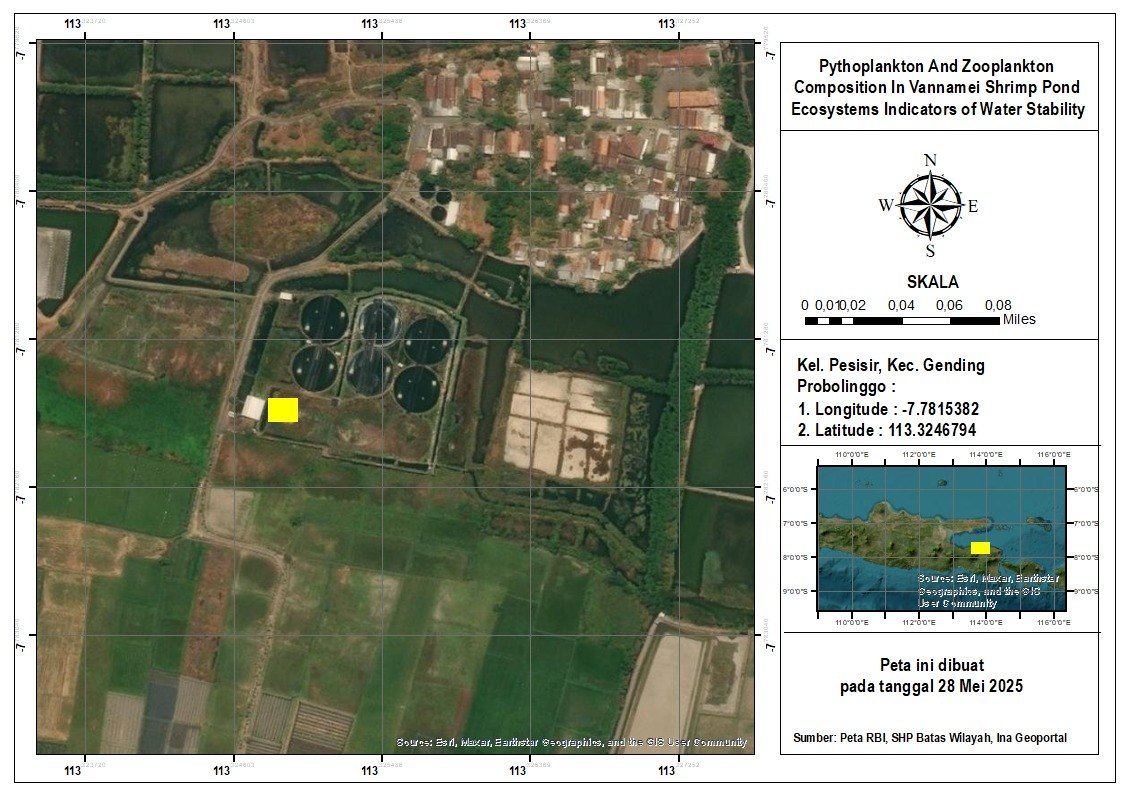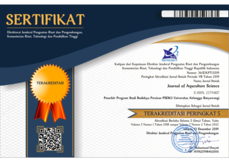Pythoplankton and Zooplankton Composition in Vannamei Shrimp (Litopenaeus vannamei) Pond Ecosystems as Indicators of Water Stability

Vannamei shrimp (Litopenaeus vannamei) is one of the leading commodities. Environmental factors are crucial to intensive vannamei shrimp production. Changes in the plankton's composition can show the ecosystem's balance. This research was carried out from March to June 2022 in intensive ponds in the Gending district, Probolinggo Regency, East Java. Sampling was carried out over seven weeks. The population was calculated using a haemocytometer. The species diversity was calculated using the Shannon-Wiener formula, and the uniformity index was calculated using the Odum formula. The abundance of zooplankton did not have a significant relationship with water quality parameters because each species was affected by different water quality parameters. The N/P ratio value does not directly impact the plankton population in this shrimp pond, where the results obtained from the pond waters have low diversity, which means that the waters have a low level of uniformity. There is no dominance of certain species
Copyright (c) 2025 Atiek Pietoyo, Indra Kristiana, Irvan Firman Syah, Hafidz Hakim , Wahyu Puji Astiyani

This work is licensed under a Creative Commons Attribution-NonCommercial-ShareAlike 4.0 International License.



















